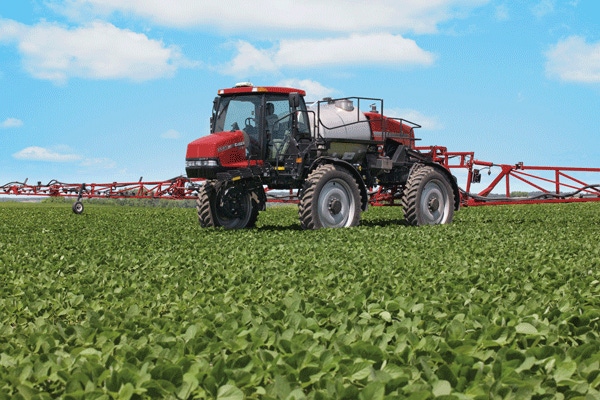May 23, 2011

Crop farmers need to take precautions to reduce off-target drift when applying herbicides this spring, said Purdue Extension weed scientist Bill Johnson.
"Drift reduces product efficacy on the intended target and can result in damage to sensitive plants," he said. "It also can deposit illegal residues on edible crops, especially organic or processed crops that are checked for contaminants."
There are two types of herbicide drift — vapor and particle. With vapor drift, the application reaches its target, but at some point moves off-target after application.
With particle drift, the portion that moves off-target never reaches is target. Particle drift can occur with any pesticide application, regardless of product formulation, and is directly associated with droplet size, sprayer boom height and wind speed.
"Injury symptoms from drift will depend on the product used, environmental conditions and sensitivity of the plants in the path of air flow," Johnson said.
"Low concentrations of glyphosate may or may not show injury symptoms, while low concentrations of 2,4-D or dicamba may show major symptoms on sensitive plants such as tomatoes, grapes and roses."
Farmers can reduce drift by parking the sprayer in windy conditions and controlling droplet size by choosing the proper nozzles and operating equipment at the proper pressures.
Other common ways to reduce particle drift include:
• Use the lower end of the recommended pressure range for a particular nozzle to produce course droplets.
• Lower the boom height but ensure the spray pattern is maintained.
• Rather than increasing pressure to provide higher outputs, increase the nozzle size to increase the spray volume per acre while keeping within the recommended pressure.
• Spray when wind speeds are below 10 mph. Some herbicide labels specifically state that applications should not be made when winds exceed 10 mph.
• Spray when the wind direction is away from sensitive areas.
• If possible, use a drift control agent.
Vapor drift presents a bigger challenge to crop farmers. "Vapor drift is much harder to control than particle drift," Johnson said. "Vapor drift is a function of the herbicide formulation and ambient temperature."
Temperature and weather conditions favorable for long-distance vapor drift most commonly occur from mid-April to mid-May, but can continue into June and July.
"Long-distance movement usually occurs at night when the temperature is cool and there is light air movement," Johnson said.
"When such days occur, being aware of a volatile herbicide's ability to vaporize can help applicators manage potential drift problems by either not spraying until conditions improve or by choosing a formulation of the product that is less subject to volatilization."
More information about spray drift is available in a paper published by Purdue Extension Weed Scientists Tom Jordan, Glenn Nice, Johnson and Tom Bauman at http://www.ag.purdue.edu/btny/weedscience/Documents/ReducingDrift09.pdf.
You May Also Like




